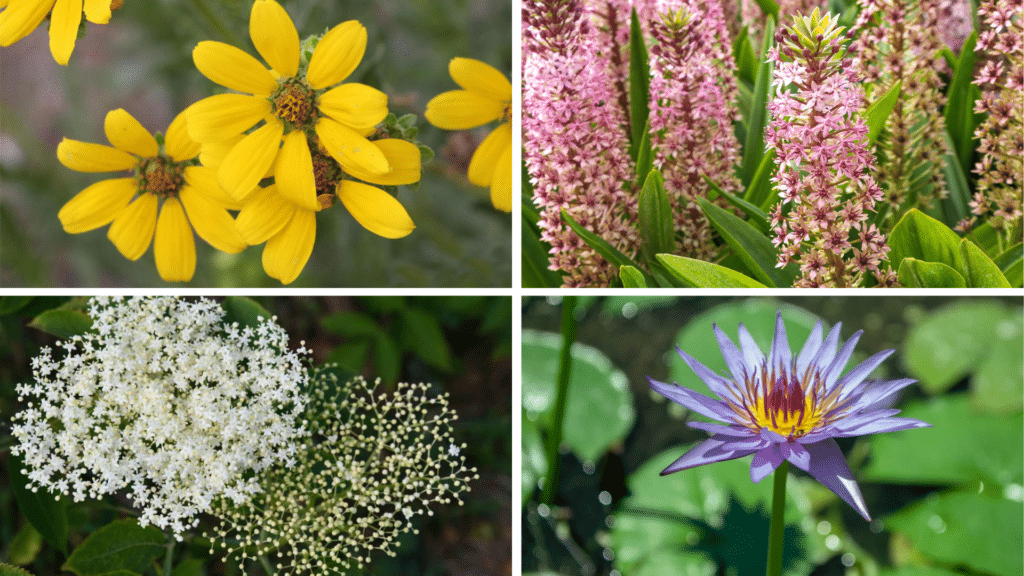Finding the right flowers for your garden can be tough when you have so many options. The search gets even harder when you’re looking for specific types that might not be as common.
Many gardeners find themselves stuck when trying to add variety to their flower beds.
Good news! The plant world offers many beautiful flowers that start with e. These flowers can add fresh colors and textures to any garden space.
This blog brings you 41 amazing E-named flowers, from common favorites to rare finds. You’ll learn about their basic care needs, ideal growing conditions, and how they can fit into your garden plans.
By the end, you’ll have all the info you need to pick the perfect flowers for your outdoor space.
Summer Flowers That Start with E
Summer brings its special collection of E-flowers. Epimedium thrives in the hot months, showing off bright orange and yellow blooms that can handle full sun.
Evening Primrose opens its soft yellow blossoms during summer evenings, adding a gentle glow to gardens as the sun sets.
The following are a few beautiful flowers that start with e and grow in the summer:
1. Echinacea (Coneflower)
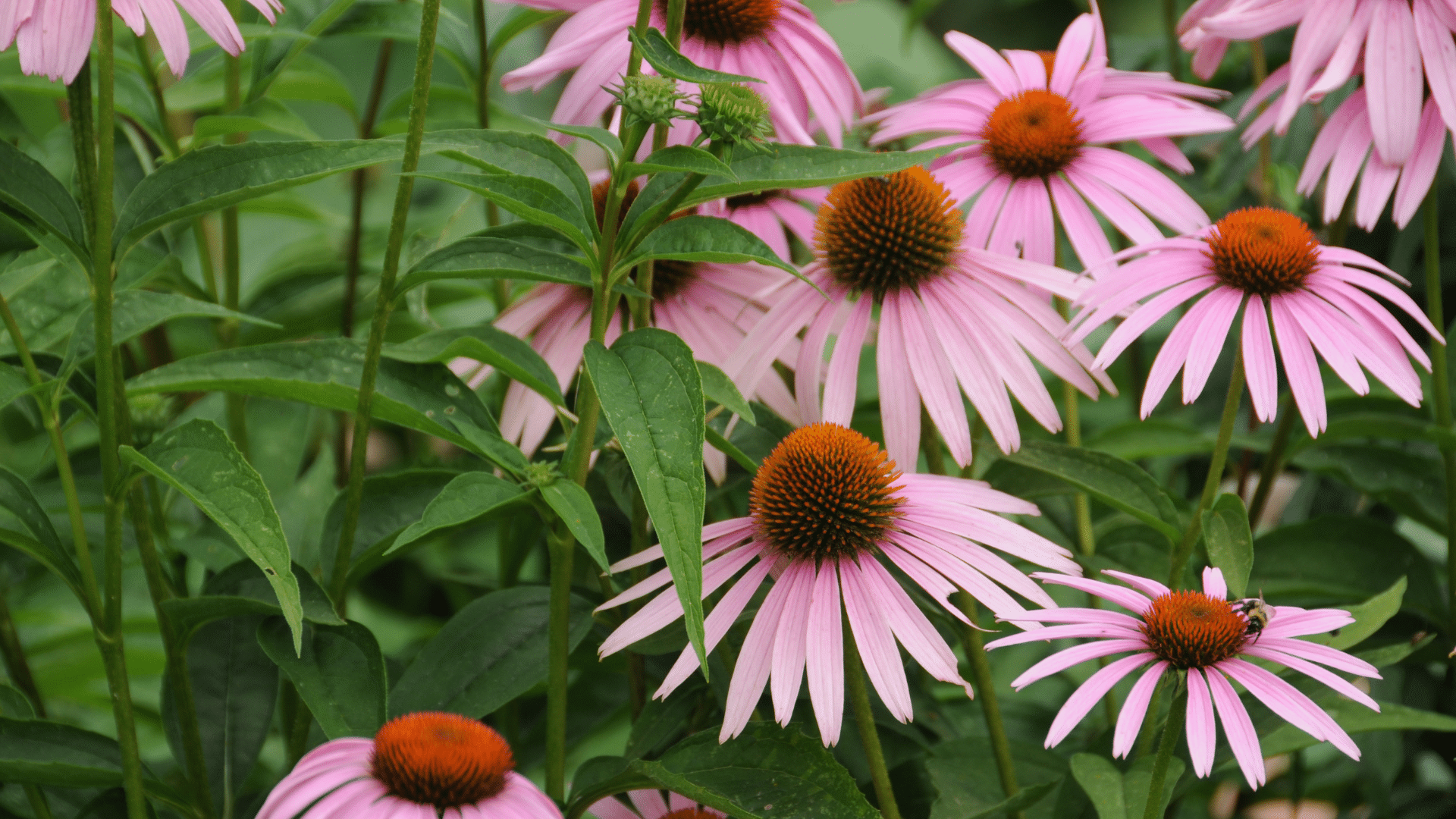
Echinacea, commonly known as coneflower, is a colorful daisy-like flower that thrives in the summer. Known for its medicinal properties, it’s often used to boost the immune system.
| Attribute | Details |
|---|---|
| Scientific Name | Echinacea purpurea |
| Commonly Found Region | North America, especially the Midwest |
| Blooming Period | Summer to Fall |
| Symbolism | Strength and health |
| Benefits | Immune system support, anti-inflammatory properties |
How to plant:
- Plant in well-drained soil with full sun exposure.
- Water moderately and ensure the soil isn’t soggy.
- Space plants about 12–18 inches apart.
Fun Fact: Echinacea is a popular herb in traditional medicine, known for its ability to fight colds and infections.
2. Evening Primrose
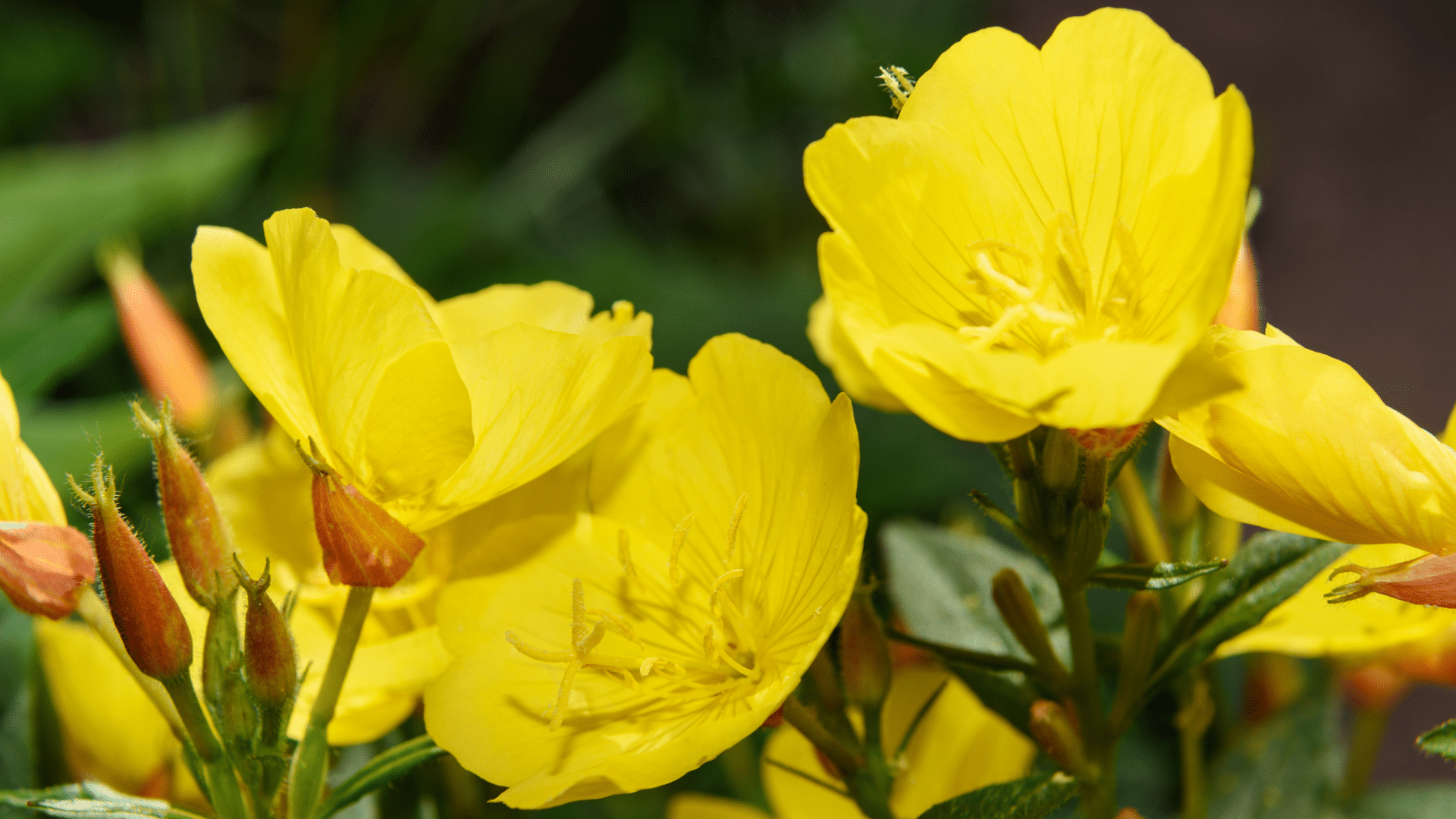
Evening Primrose, known for its colorful yellow flowers, blooms in the evening and releases a sweet fragrance. It’s commonly found in the wild and is known for its medicinal uses.
| Attribute | Details |
|---|---|
| Scientific Name | Oenothera biennis |
| Commonly Found Region | North America, Europe, and parts of Asia |
| Blooming Period | Summer to Fall |
| Symbolism | Eternal love and remembrance |
| Benefits | Skin health, hormone regulation |
How to plant:
- Plant in well-drained soil with full sun exposure.
- Water deeply but infrequently once established.
- Space plants about 18 inches apart.
Fun Fact:Evening Primrose oil is commonly used to treat skin conditions like eczema and acne.
3. Eryngium (Sea Holly)
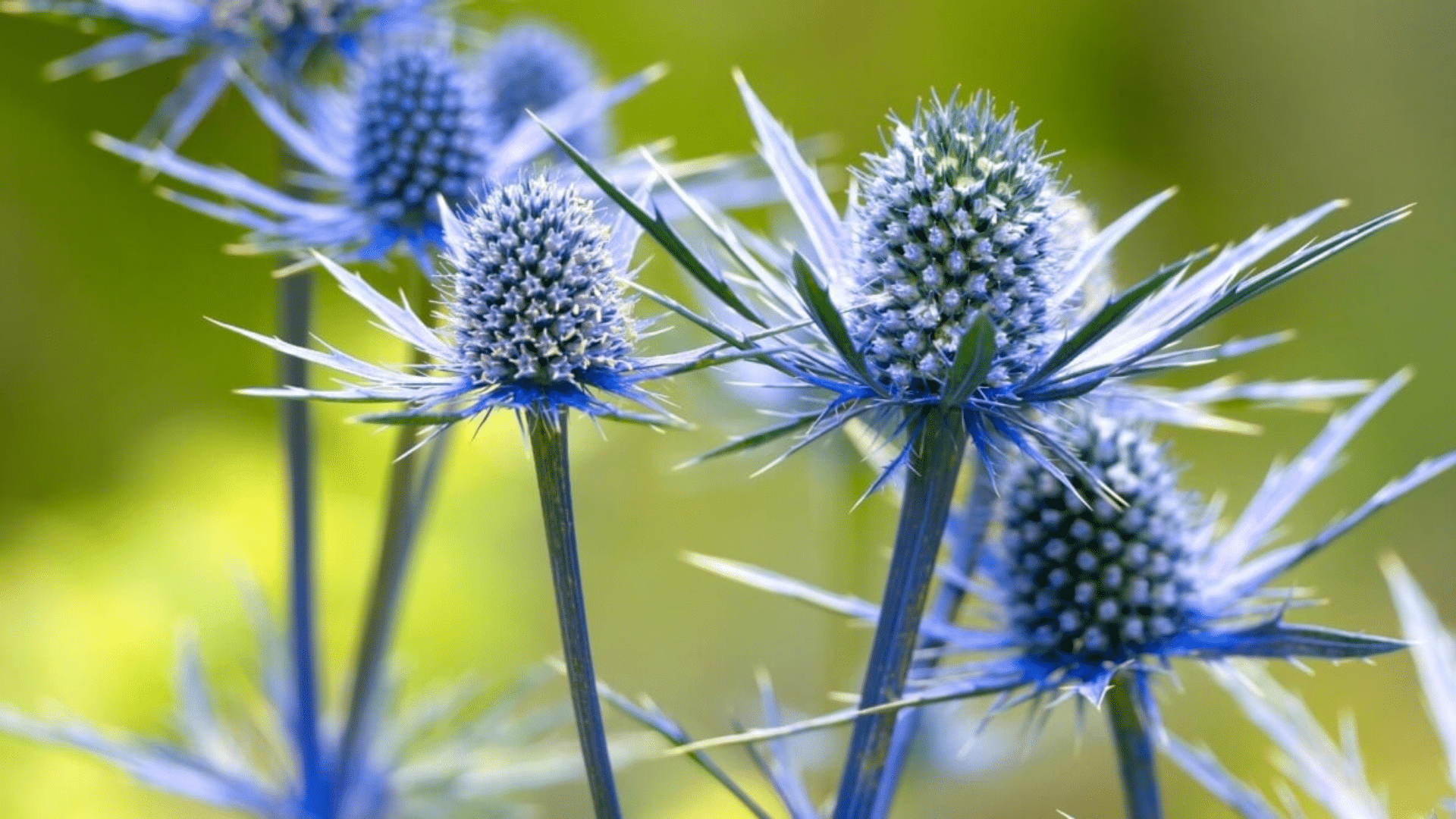
Eryngium, or Sea Holly, is known for its spiky, silver-blue flowers that look like a thistle. These plants thrive in coastal regions and are often used in floral arrangements due to their striking appearance.
| Attribute | Details |
|---|---|
| Scientific Name | Eryngium spp. |
| Commonly Found Region | Coastal regions of Europe and North America |
| Blooming Period | Summer to Fall |
| Symbolism | Strength and endurance |
| Benefits | Anti-inflammatory, attracts pollinators |
How to plant:
- Plant in well-drained soil with full sun.
- Prefers dry conditions once established.
- Space plants around 12–18 inches apart.
Fun Fact:Sea Holly is known for attracting bees and butterflies, making it a great addition to pollinator-friendly gardens.
4. Erica carnea (Winter Heath)
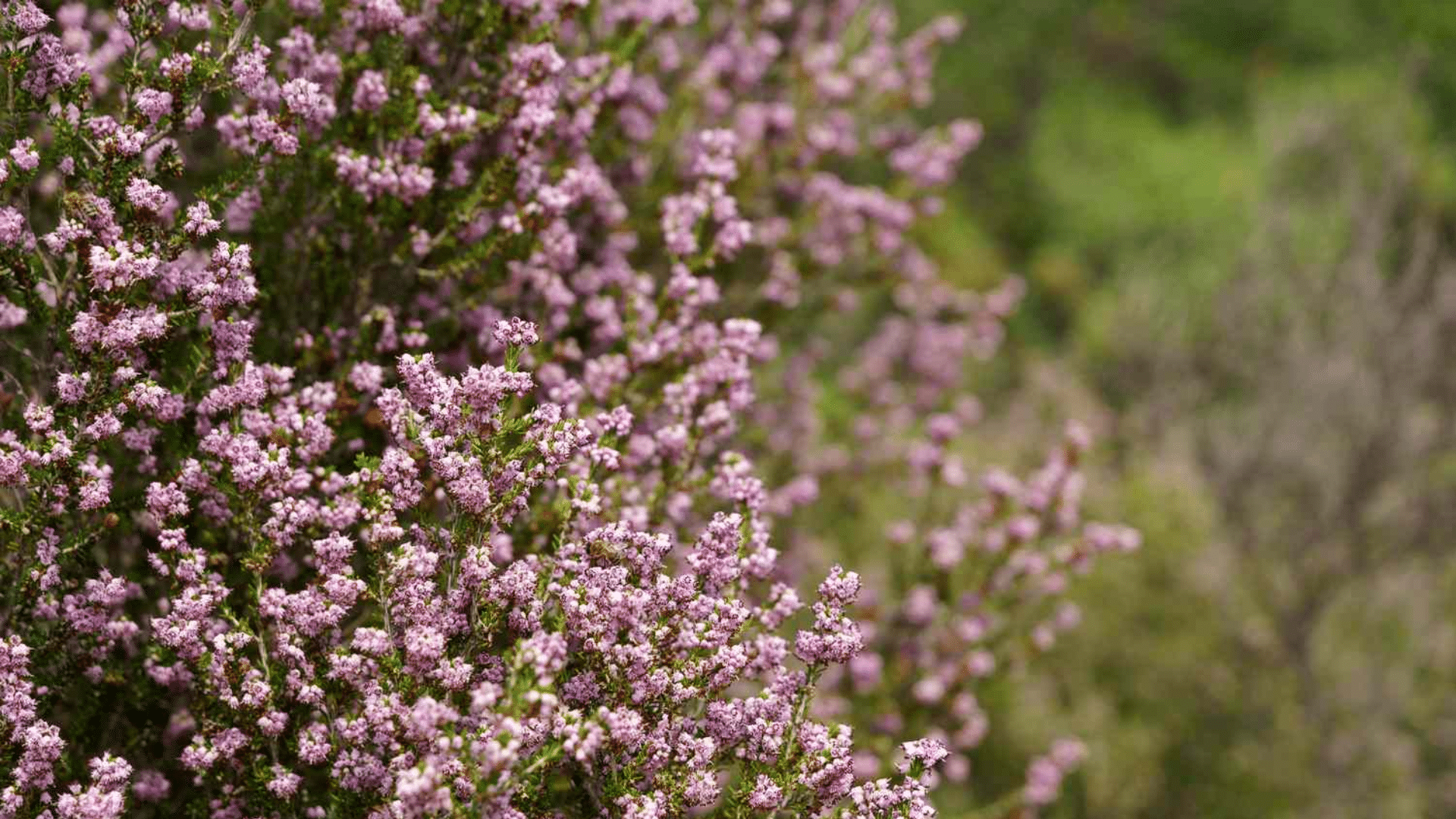
Erica carnea, or Winter Heath, blooms in the coldest months, offering bright pink or purple flowers that add color to winter landscapes. This hardy evergreen shrub can thrive even in the harshest conditions.
| Attribute | Details |
|---|---|
| Scientific Name | Erica carnea |
| Commonly Found Region | Europe, especially in the Alps and other mountainous areas |
| Blooming Period | Winter to Early Spring |
| Symbolism | Resilience and endurance |
| Benefits | Attracts pollinators; evergreen foliage provides winter interest |
How to plant:
- Plant in well-drained acidic soil with full sun or partial shade.
- Water moderately during the growing season.
- Space plants around 18 inches apart.
Fun Fact:Winter Heath is one of the few plants that bloom during winter, providing essential nectar for early pollinators.
5. Epimedium (Barrenwort)
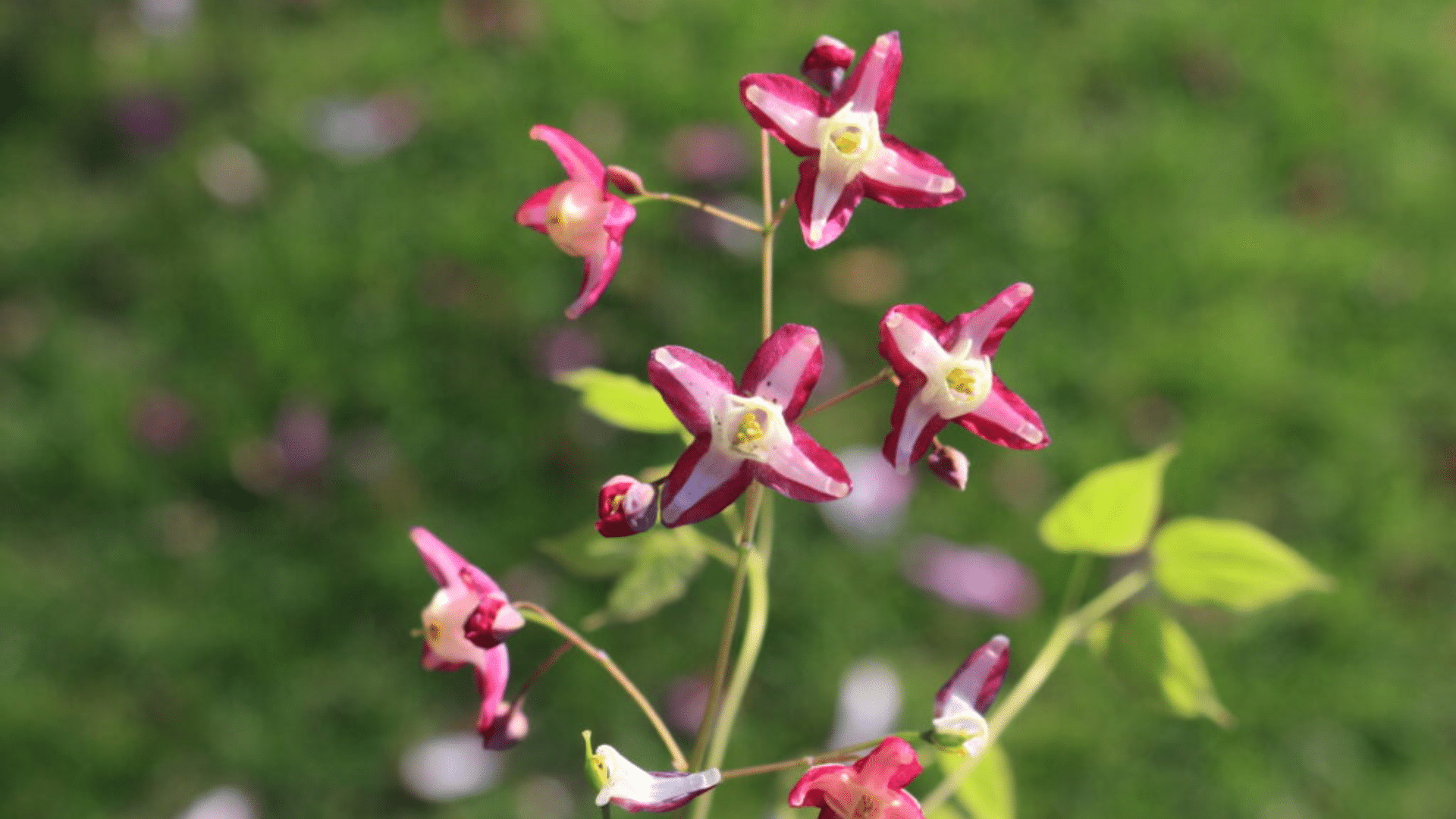
Epimedium, or Barrenwort, is a groundcover plant known for its heart-shaped leaves and delicate, nodding flowers. It’s an excellent choice for shady garden spots and woodland areas.
| Attribute | Details |
|---|---|
| Scientific Name | Epimedium spp. |
| Commonly Found Region | East Asia, Europe, and North America |
| Blooming Period | Spring |
| Symbolism | Love, fertility, and protection |
| Benefits | Enhances blood circulation, ground cover |
How to plant:
- Plant in well-drained, humus-rich soil with partial to full shade.
- Water regularly, but avoid waterlogging.
- Space plants about 12 inches apart.
Fun Fact:Epimedium is often called “Fairy Wings” due to the whimsical appearance of its flowers.
6. Episcia

Episcia, also known as the flame violet, is a colorful, trailing plant native to tropical regions. Known for its colorful flowers and velvety leaves, it’s a popular choice for hanging baskets.
| Attribute | Details |
|---|---|
| Scientific Name | Episcia spp. |
| Commonly Found Region | Tropical America |
| Blooming Period | Year-round in tropical climates |
| Symbolism | Beauty, passion, and energy |
| Benefits | Air-purifying properties |
How to plant:
- Plant in well-drained, rich soil in indirect sunlight.
- Water regularly, but avoid waterlogging.
- Space plants 6-12 inches apart.
Fun Fact: Episcia is commonly grown as a houseplant because of its colorful blooms and ability to thrive in low light.
7. Eustoma (Lisianthus)
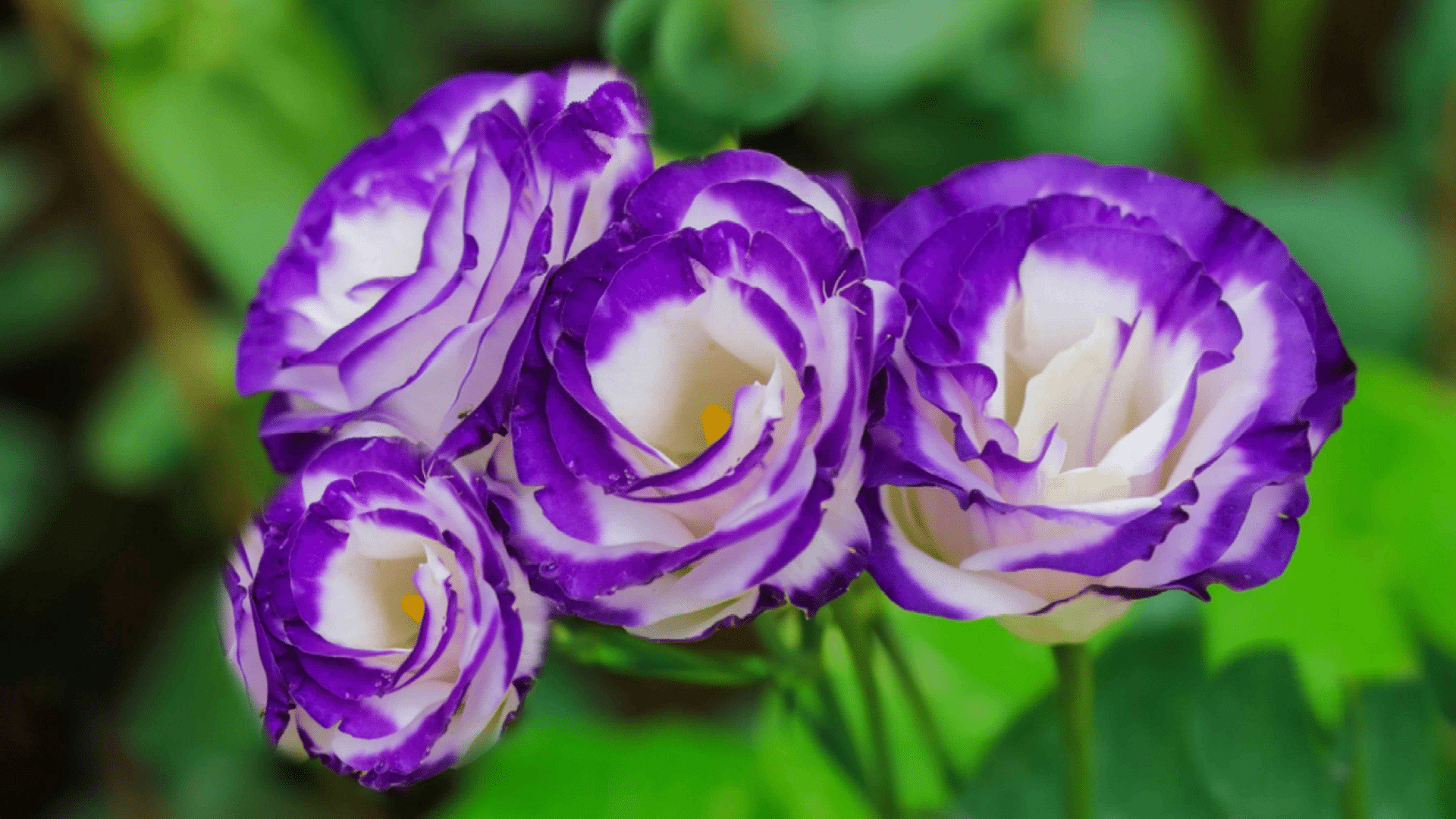
Eustoma, or Lisianthus, is known for its beautiful, rose-like flowers in shades of purple, white, and pink. It’s widely used in floral arrangements due to its delicate beauty.
| Attribute | Details |
|---|---|
| Scientific Name | Eustoma grandiflorum |
| Commonly Found Region | North America, Mexico, and Japan |
| Blooming Period | Summer to Fall |
| Symbolism | Gratitude, appreciation, and charm |
| Benefits | Long-lasting flowers for bouquets |
How to plant:
- Plant in well-drained, slightly acidic soil with full sun exposure.
- Water moderately and allow the soil to dry between waterings.
- Space plants about 12–18 inches apart.
Fun Fact: Eustoma is often used in wedding bouquets because of its beautiful, soft appearance and color variety.
8. Elaeagnus Umbellata
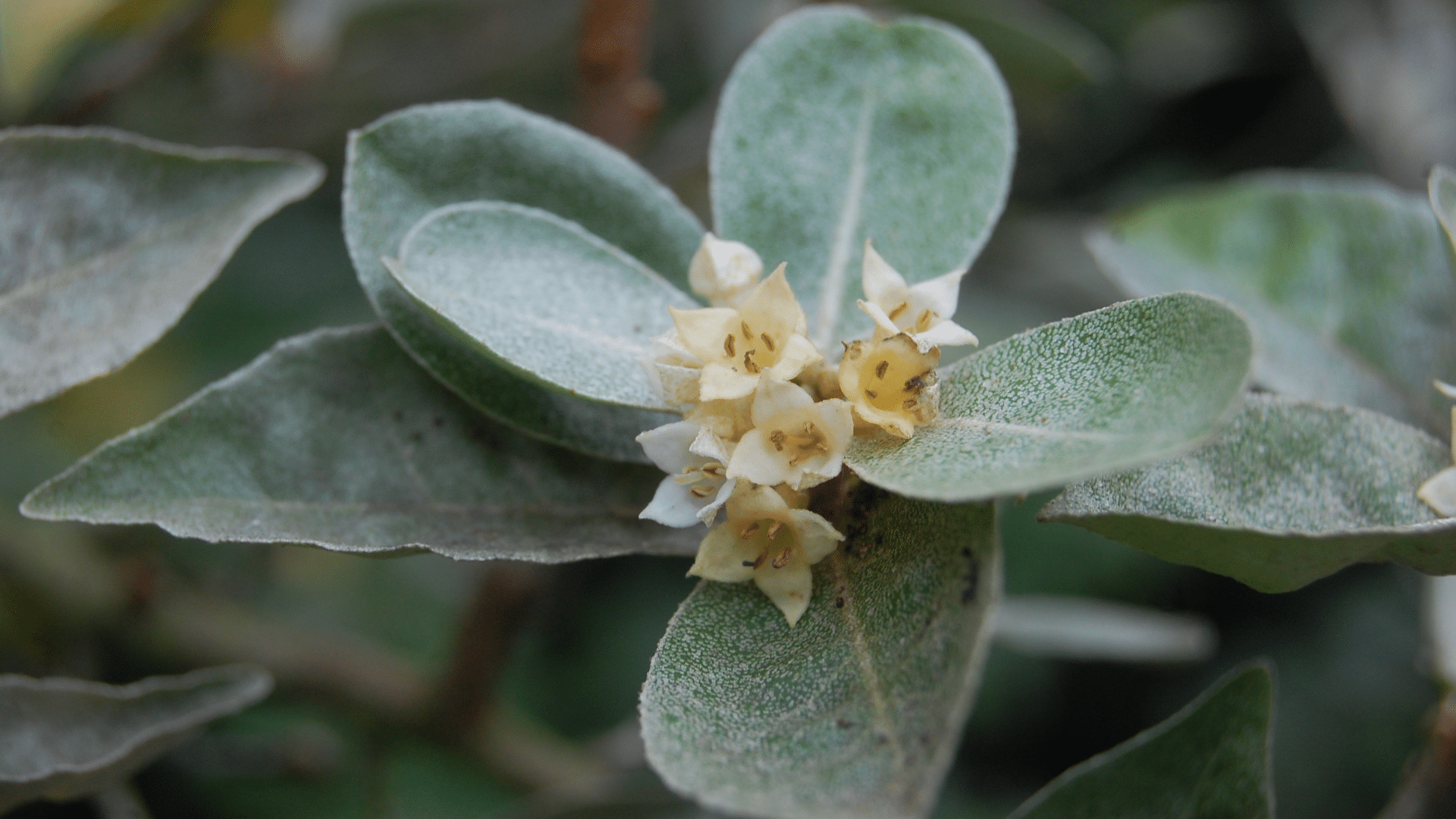
Elaeagnus umbellata, or Autumn Olive, is a fast-growing shrub with silvery leaves and fragrant yellow flowers. It’s known for its bright red berries, which are edible and packed with nutrients.
| Attribute | Details |
|---|---|
| Scientific Name | Elaeagnus umbellata |
| Commonly Found Region | Eastern Asia, North America |
| Blooming Period | Spring to Early Summer |
| Symbolism | Longevity, abundance, and resilience |
| Benefits | Edible berries, soil improvement |
How to plant:
- Plant in well-drained soil with full sun exposure.
- Water moderately, especially during dry spells.
- Space plants 6-10 feet apart for shrubs.
Fun Fact: The fruit of Elaeagnus umbellata is rich in antioxidants and vitamin C, often used to make jams and juices
9. Exacum
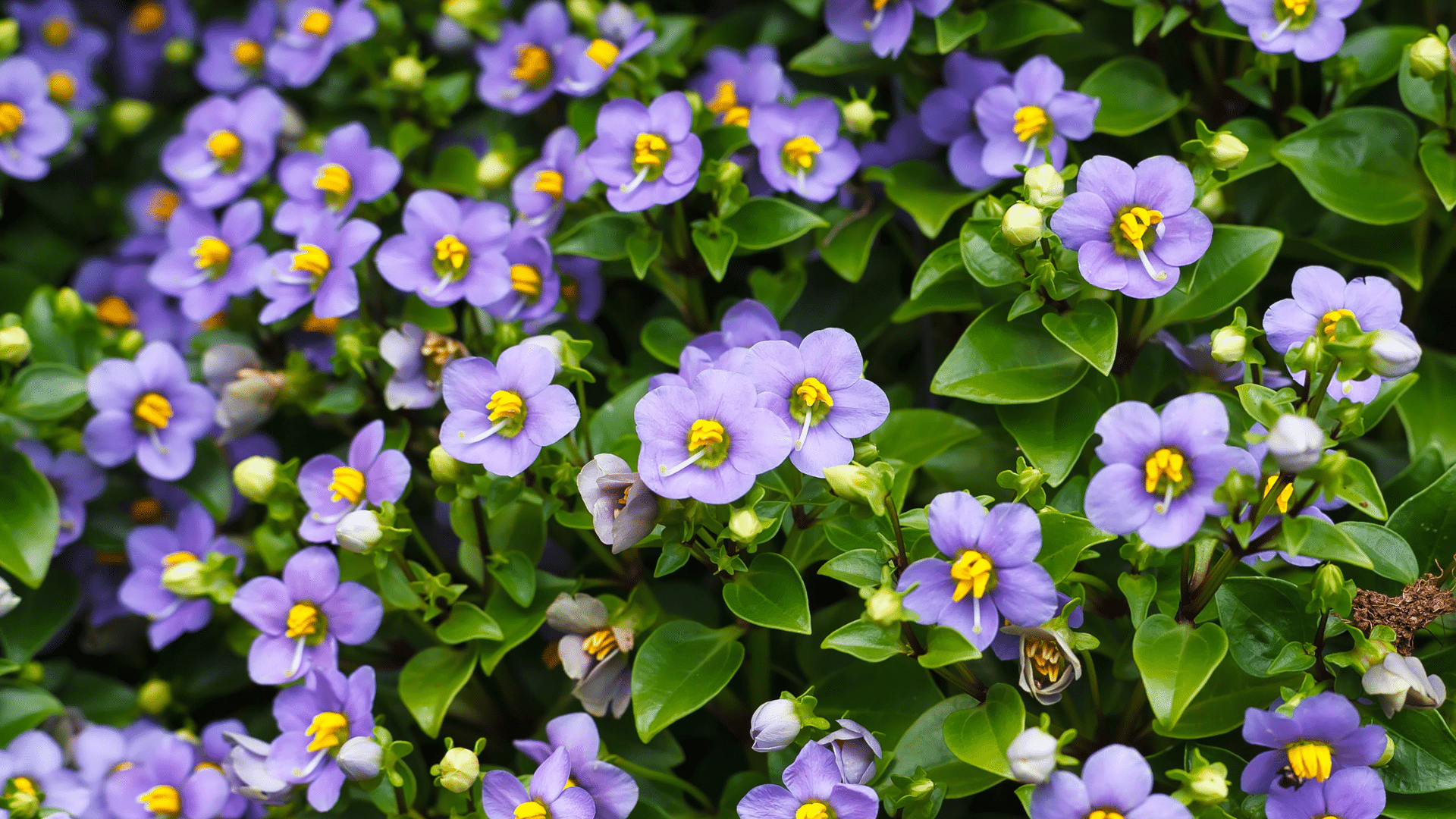
Exacum is a small, aromatic plant with bright, star-shaped flowers that bloom in late spring to early summer. It’s a popular choice for small gardens and container planting.
| Attribute | Details |
|---|---|
| Scientific Name | Exacum affine |
| Commonly Found Region | Tropical Asia |
| Blooming Period | Spring to Summer |
| Symbolism | Love, friendship, and appreciation |
| Benefits | Fragrant flowers, easy to grow |
How to plant:
- Plant in well-drained soil in full to partial sun.
- Water regularly, ensuring the soil stays slightly moist.
- Space plants around 6-8 inches apart.
Fun Fact:Exacum flowers are often grown for their unique, pleasant fragrance, which attracts pollinators like bees.
10. Elderflower
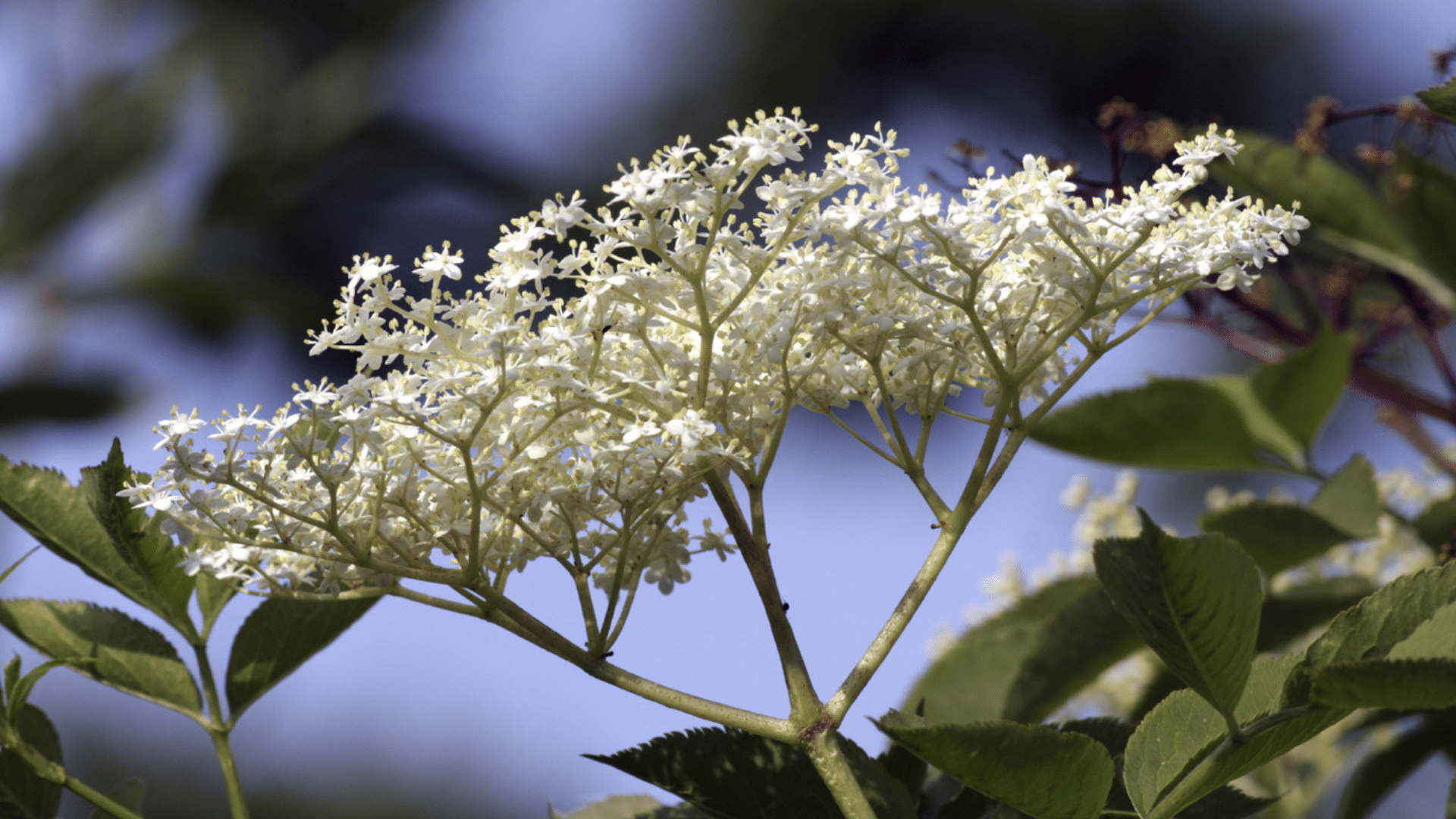
Elderflower, known for its small white or cream-colored flowers, blooms in late spring. It’s famous for its medicinal uses, especially in teas and syrups for colds and flu.
| Attribute | Details |
|---|---|
| Scientific Name | Sambucus nigra |
| Commonly Found Region | Europe, North America, Asia |
| Blooming Period | Late Spring to Early Summer |
| Symbolism | Protection, healing, and good health |
| Benefits | Antioxidant-rich, immune support |
How to plant:
- Plant in well-drained soil with full sun or partial shade.
- Water regularly to keep the soil moist.
- Space plants around 6-8 feet apart.
Fun Fact:Elderflower is often used in making elderflower cordial, a popular drink in European countries during the summer months.
11. Egyptian Lotus
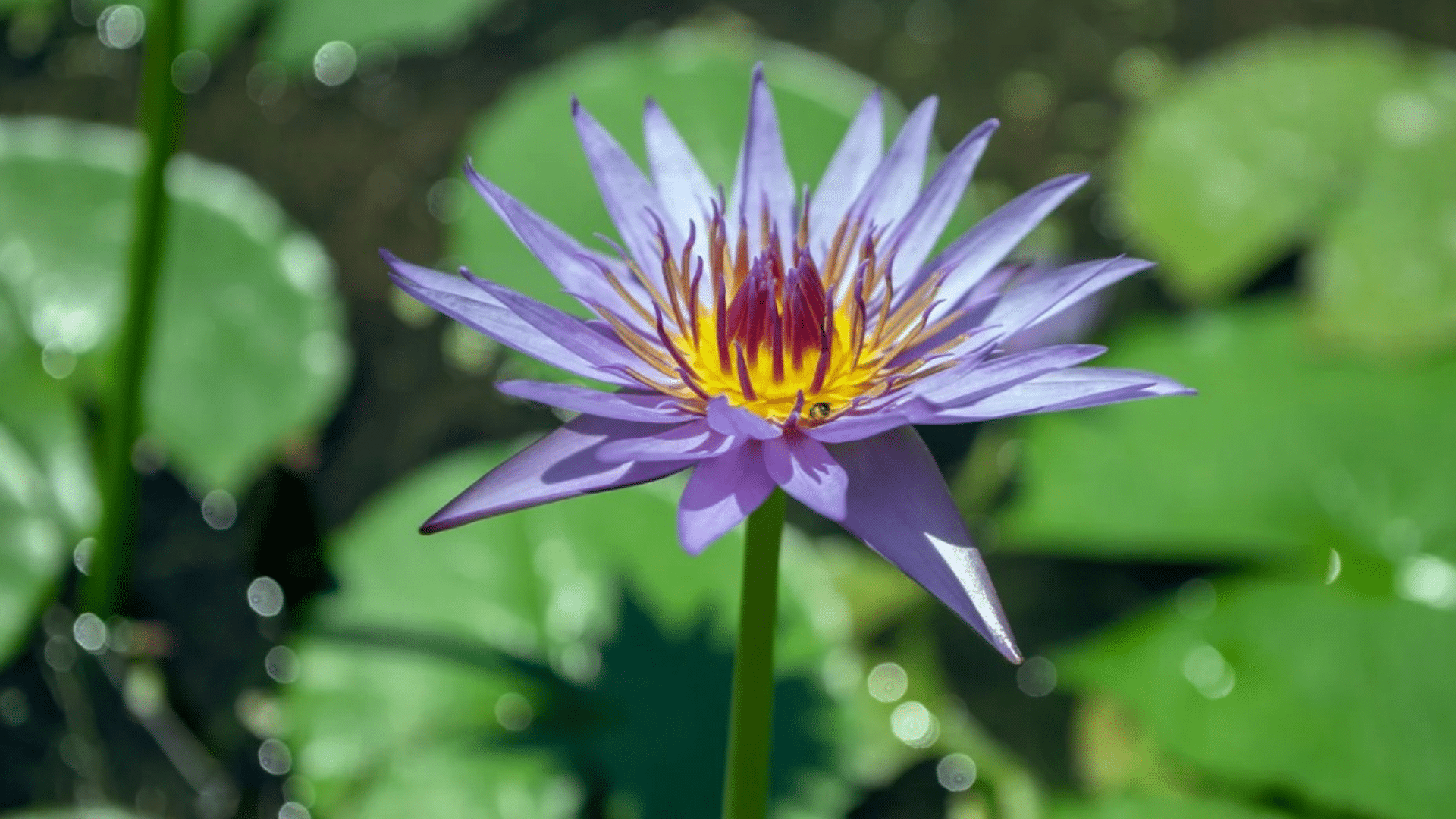
The Egyptian Lotus, also known as the Blue Lotus, is known for its stunning blue or white flowers and its symbolism in ancient Egypt. This water plant thrives in still, warm waters and is revered for its beauty.
| Attribute | Details |
|---|---|
| Scientific Name | Nymphaea caerulea |
| Commonly Found Region | Egypt, Eastern Africa, and Southeast Asia |
| Blooming Period | Summer |
| Symbolism | Rebirth, enlightenment, and purity |
| Benefits | Stress relief, natural beauty |
How to plant:
- Plant in still, warm water, ideally in a pond or water garden.
- Ensure the water temperature is above 70°F (21°C) for optimal growth.
- Space plants about 18-24 inches apart.
Fun Fact:The Egyptian Lotus was considered sacred by the ancient Egyptians and often appeared in their art and mythology.
12. Echinops (Globe Thistle)
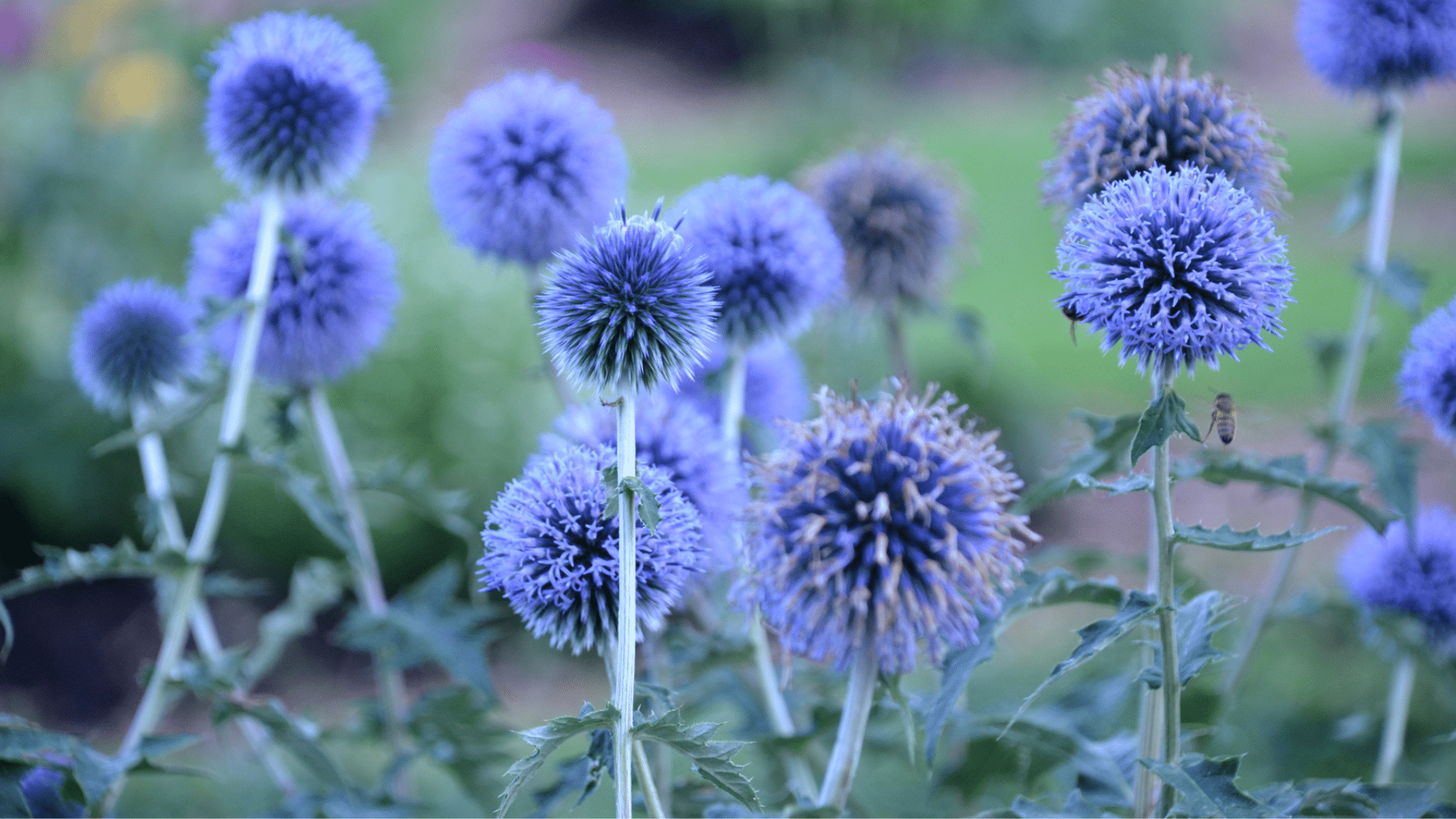
Echinops, or Globe Thistle, is known for its spiky, globe-shaped blue flowers. It is a hardy perennial that attracts pollinators like bees and butterflies with its striking appearance.
| Attribute | Details |
|---|---|
| Scientific Name | Echinops ritro |
| Commonly Found Region | Europe, Asia, and parts of North America |
| Blooming Period | Summer to Fall |
| Symbolism | Strength and resilience |
| Benefits | Attracts pollinators, drought-tolerant |
How to plant:
- Plant in well-drained, slightly acidic soil with full sun exposure.
- Water moderately once established.
- Space plants about 12-18 inches apart.
Fun Fact:Globe Thistle flowers are not only beautiful but also long-lasting, making them great for dried flower arrangements.
13. Eucomis (Pineapple Lily)
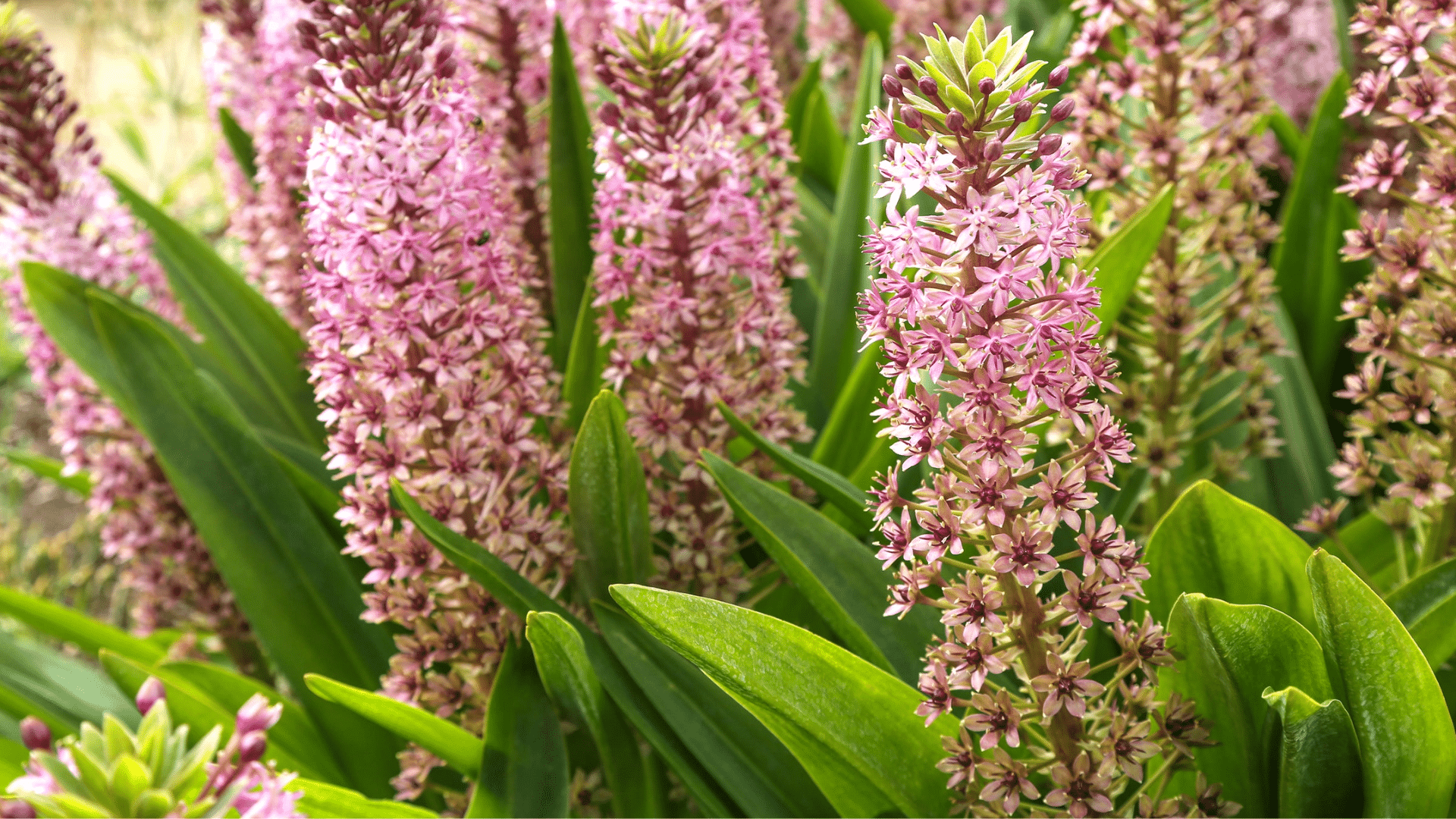
Eucomis, commonly known as Pineapple Lily, produces unique, tall spikes of flowers that resemble pineapples. These plants are easy to grow and make for eye-catching additions to gardens.
| Attribute | Details |
|---|---|
| Scientific Name | Eucomis spp. |
| Commonly Found Region | Southern Africa |
| Blooming Period | Summer |
| Symbolism | Hospitality, elegance, and warmth |
| Benefits | Attractive to pollinators, decorative |
How to plant:
- Plant in well-drained soil with full sun exposure.
- Water regularly, ensuring the soil remains moist.
- Space plants about 12-18 inches apart.
Fun Fact:Pineapple Lilies are named for the pineapple-like shape of their flower clusters, which can grow up to 3 feet tall.
14. Euphorbia (Spurge)
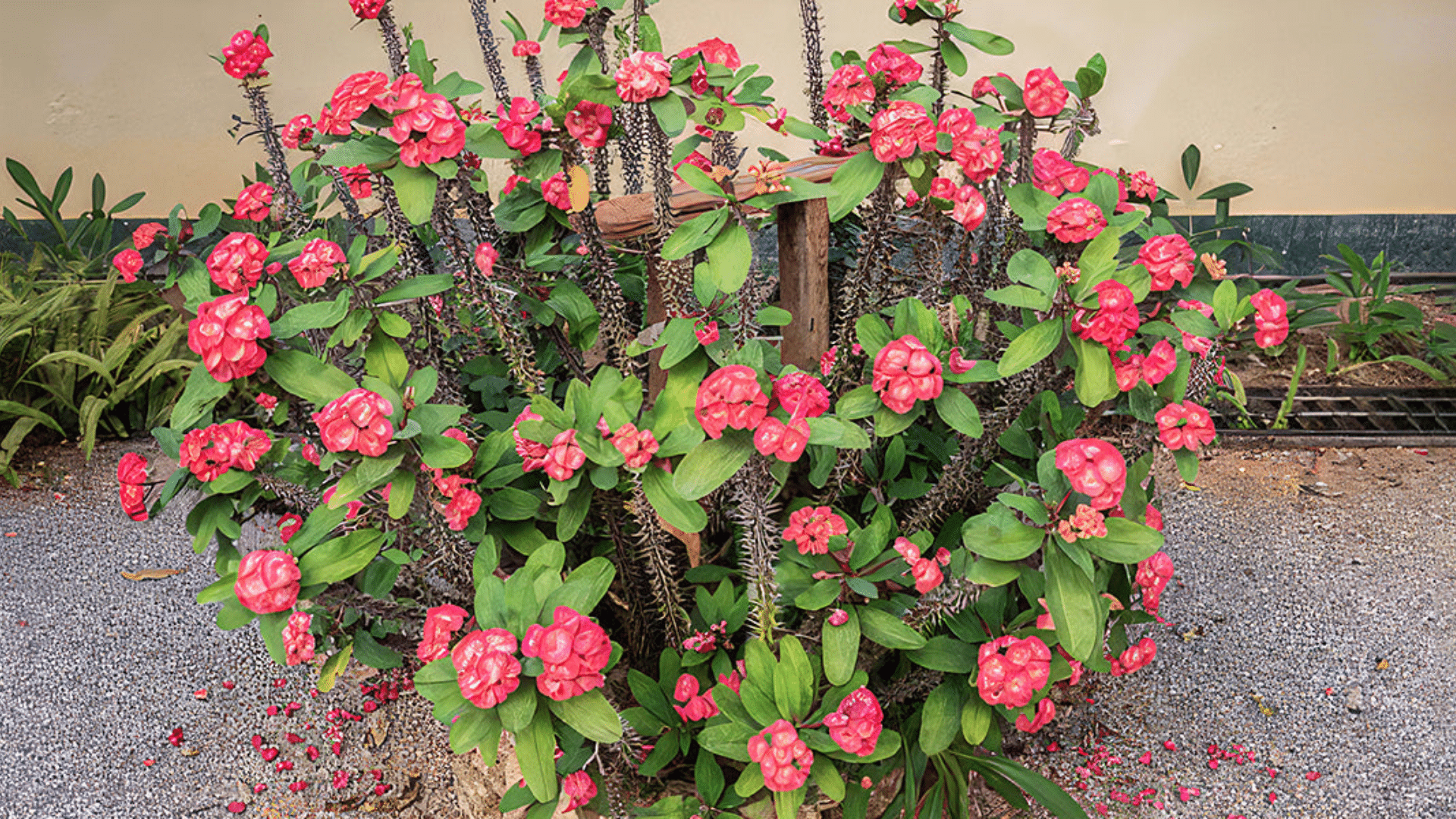
Euphorbia, or Spurge, is a diverse genus with a wide range of species, many of which feature bright, unique flowers. These plants are known for their resilience and ability to grow in various conditions.
| Attribute | Details |
|---|---|
| Scientific Name | Euphorbia spp. |
| Commonly Found Region | Worldwide, especially in Africa and Mediterranean regions |
| Blooming Period | Spring to Summer |
| Symbolism | Purity, joy, and transformation |
| Benefits | Drought-resistant, medicinal properties |
How to plant:
- Plant in well-drained, dry soil with full sun exposure.
- Water sparingly, as these plants are drought-tolerant.
- Space plants 12-24 inches apart, depending on the species.
Fun Fact:Some species of Euphorbia produce a milky sap that can be toxic, so handle with care.
15. Elderberry
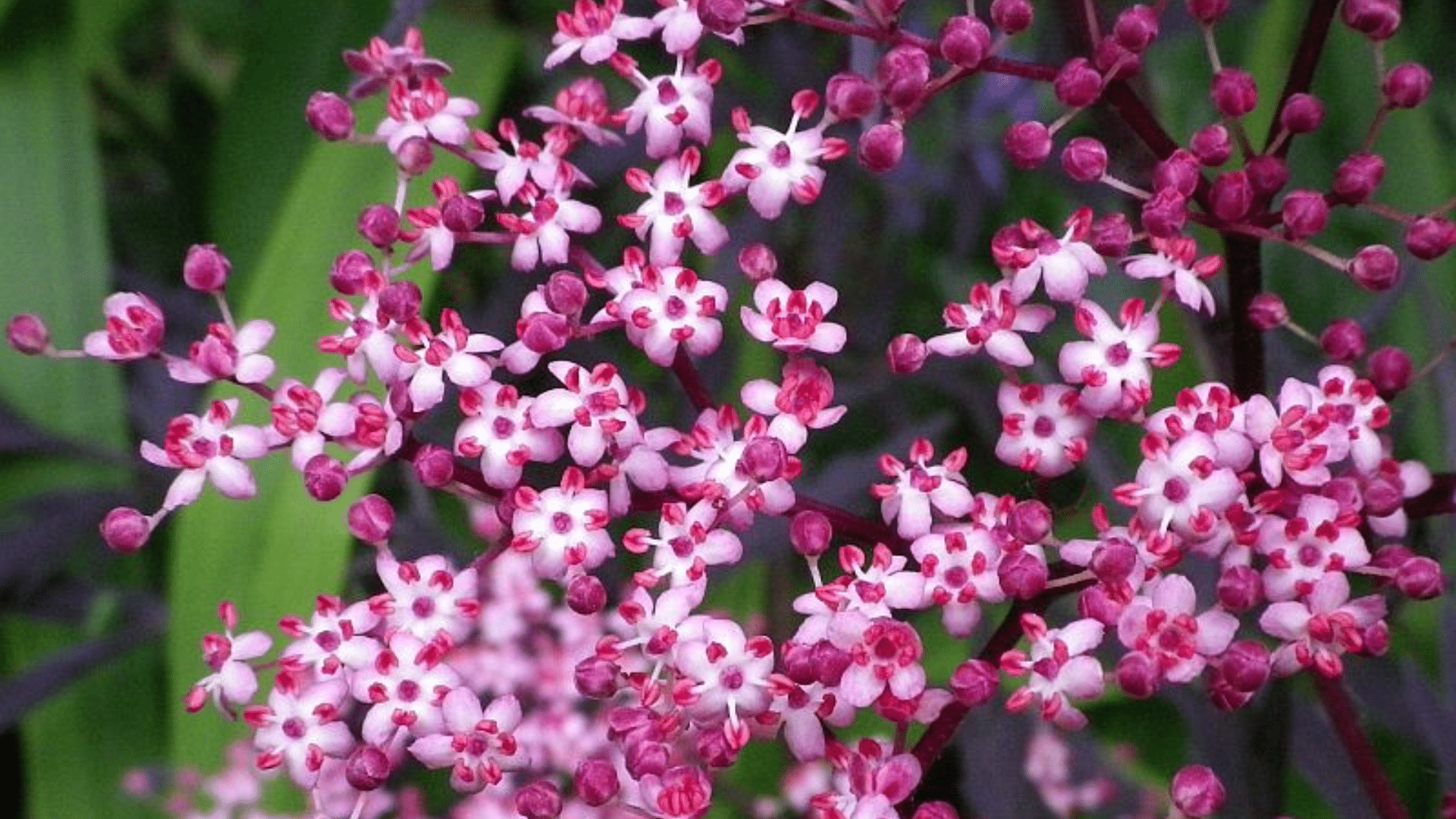
Elderberry is a deciduous shrub known for its small, white flowers that bloom in clusters. It produces dark purple-black berries that are often used to make syrups and remedies for colds and flu.
| Attribute | Details |
|---|---|
| Scientific Name | Sambucus nigra |
| Commonly Found Region | Europe, North America, and Asia |
| Blooming Period | Late Spring to Early Summer |
| Symbolism | Protection, healing, and good health |
| Benefits | High in antioxidants, boosts immunity |
How to plant:
- Plant in moist, well-drained soil with full sun to partial shade.
- Water regularly, especially during dry spells.
- Space plants 6-8 feet apart for optimal growth.
Fun Fact:Elderberries are packed with antioxidants and are commonly used in homemade remedies to fight flu and colds.
16. Echinocactus
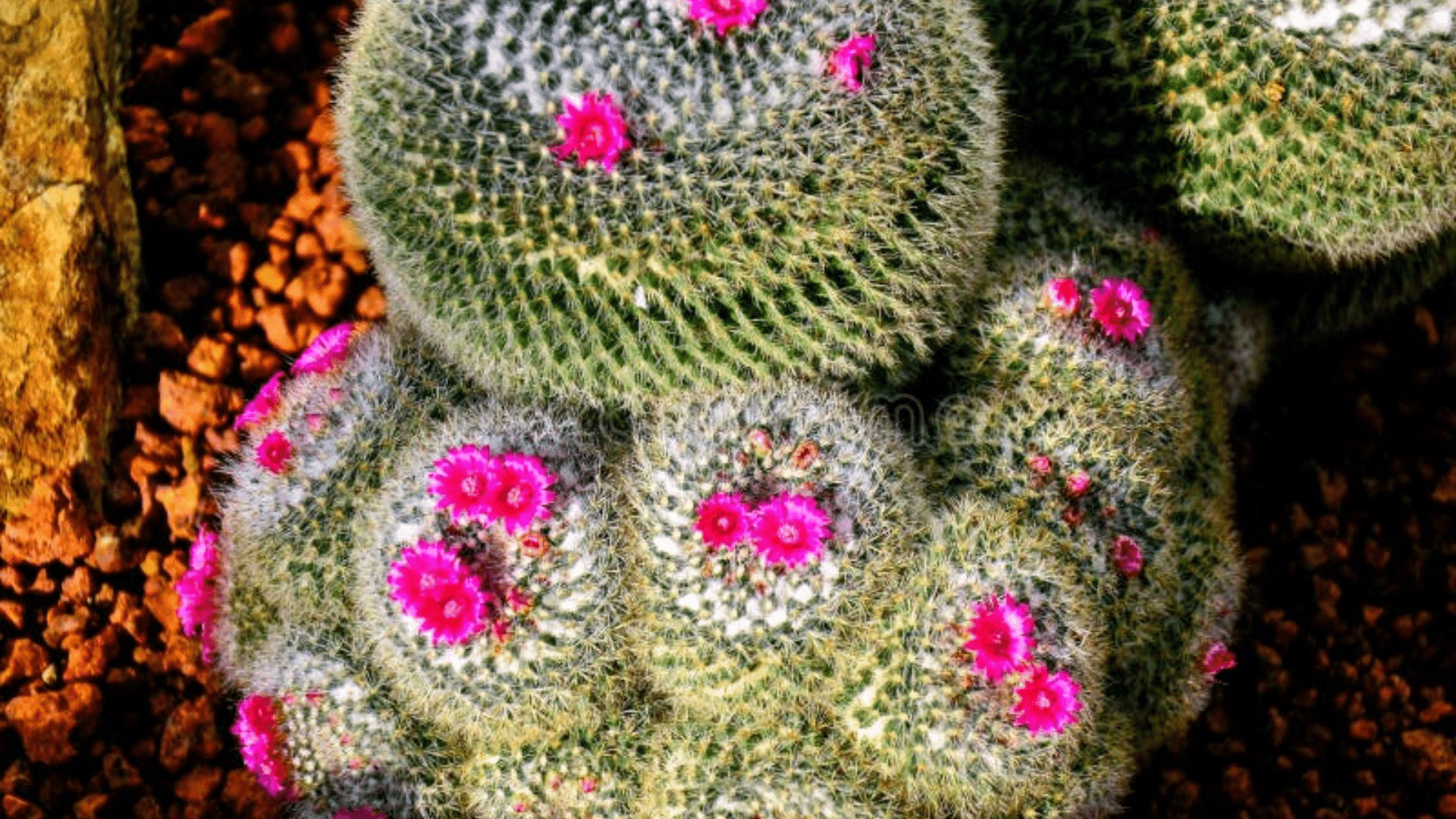
Echinocactus, commonly known as barrel cactus, features large, cylindrical, spiny bodies and produces colorful, showy flowers. This drought-tolerant cactus thrives in desert regions and is admired for its architectural shape.
| Attribute | Details |
|---|---|
| Scientific Name | Echinocactus spp. |
| Commonly Found Region | North America, particularly the deserts of the Southwest |
| Blooming Period | Spring to Summer |
| Symbolism | Endurance and resilience |
| Benefits | Drought tolerance, ornamental appeal |
How to plant:
- Plant in well-drained, sandy soil with full sun exposure.
- Water sparingly, allowing soil to dry out between waterings.
- Space plants about 12-24 inches apart.
Fun Fact:Echinocactus can live for decades in harsh desert climates and can store water for long periods.
17. Eucalyptus globulus
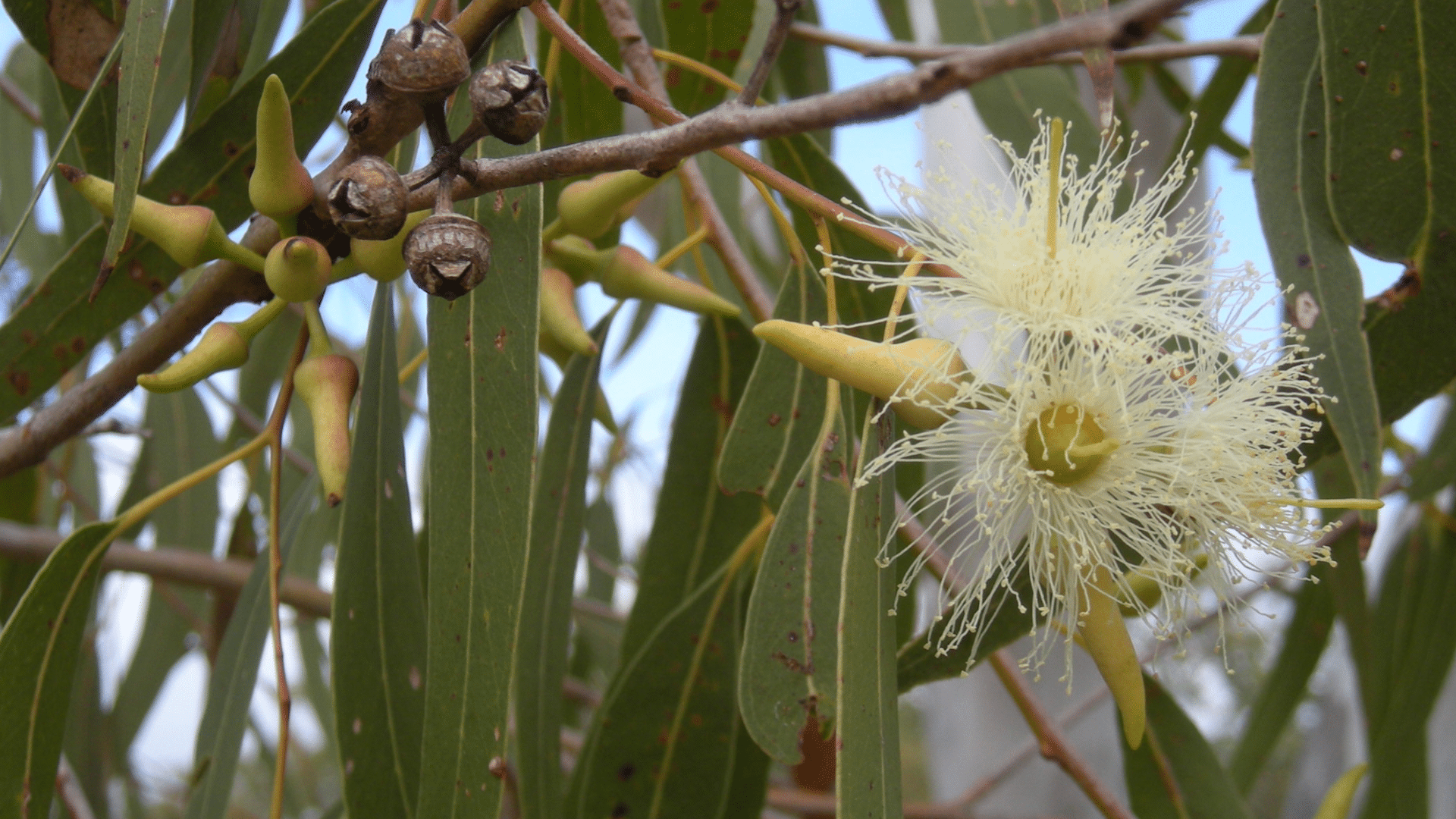
Eucalyptus globulus, also known as the Blue Gum tree, is famous for its aromatic leaves and tall stature. This tree is native to Australia and is widely known for its medicinal properties.
| Attribute | Details |
|---|---|
| Scientific Name | Eucalyptus globulus |
| Commonly Found Region | Australia, Mediterranean regions |
| Blooming Period | Summer to Fall |
| Symbolism | Protection and renewal |
| Benefits | Respiratory relief, natural oils for skin care |
How to plant:
- Plant in well-drained soil with full sun exposure.
- Water regularly but allow the soil to dry between watering.
- Space trees 10-15 feet apart for optimal growth.
Fun Fact:Eucalyptus trees are used to make essential oils, which are popular in aromatherapy for their ability to clear sinuses.
18. Epilobium (Fireweed)
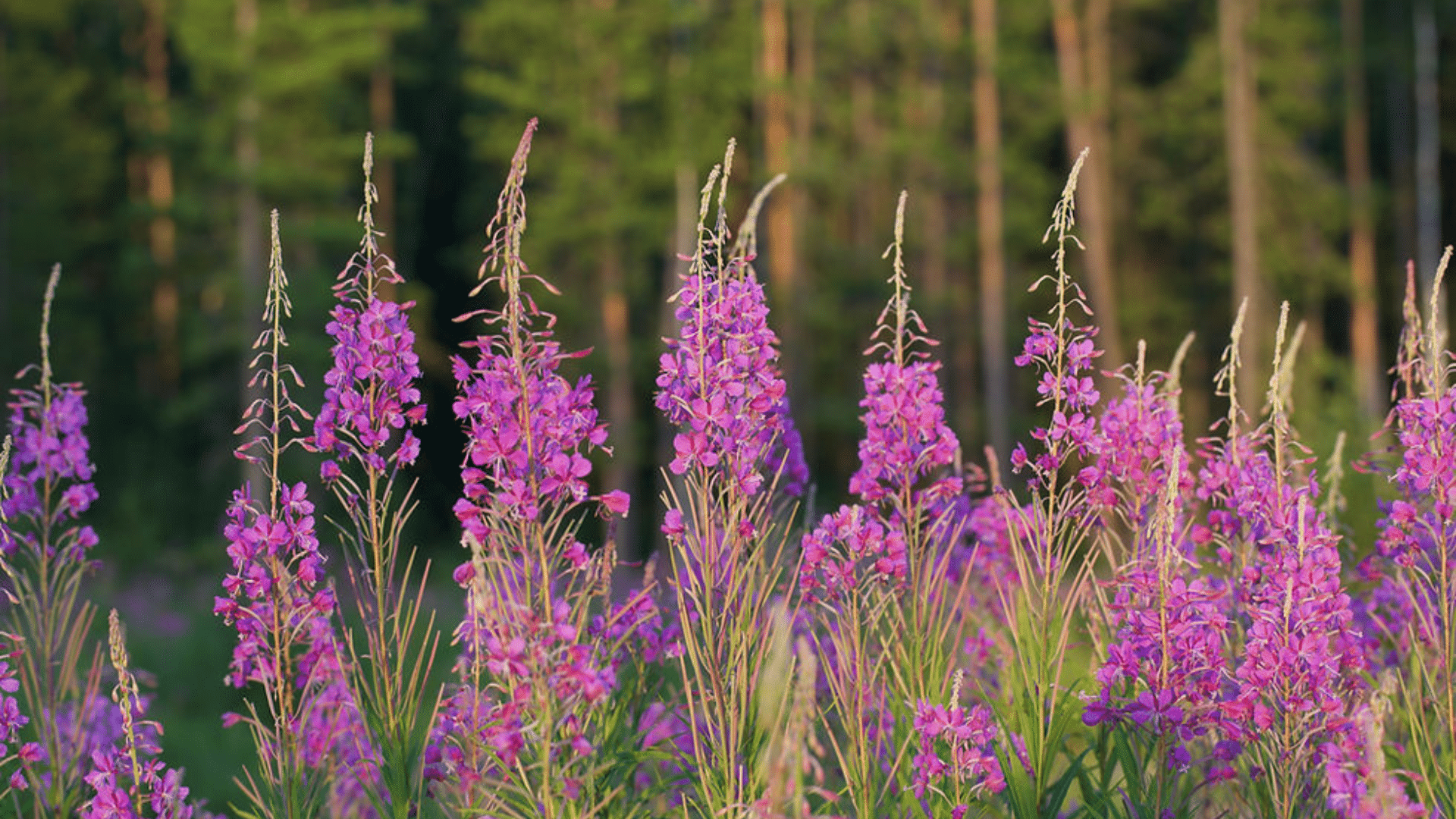
Epilobium, commonly known as Fireweed, produces tall spikes of pink to purple flowers that bloom in late summer. It’s known for its resilience, often appearing after wildfires to restore the landscape.
| Attribute | Details |
|---|---|
| Scientific Name | Epilobium angustifolium |
| Commonly Found Region | North America, Europe, and parts of Asia |
| Blooming Period | Summer to Early Fall |
| Symbolism | Renewal and recovery |
| Benefits | Soil erosion control, medicinal uses |
How to plant:
- Plant in well-drained, fertile soil with full sun exposure.
- Water moderately and ensure good drainage.
- Space plants about 12-18 inches apart.
Fun Fact:Fireweed is one of the first plants to bloom after a wildfire, aiding in soil stabilization and replanting the landscape.
19. Engelmann’s Daisy
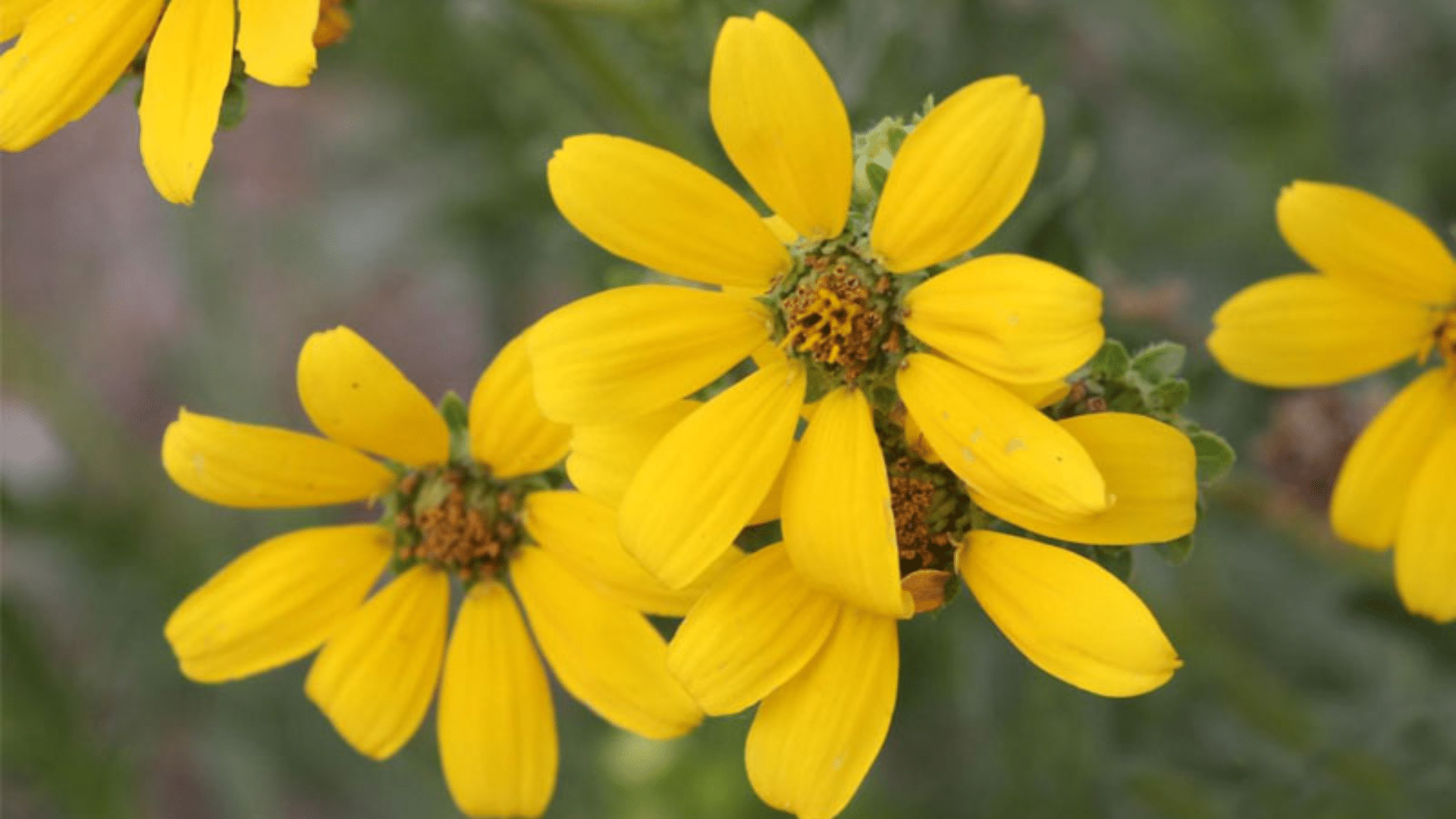
Engelmann’s Daisy is a hardy perennial with bright yellow flowers and a distinctive, sunflower-like appearance. This native wildflower is commonly found in the southwestern U.S.
| Attribute | Details |
|---|---|
| Scientific Name | Engelmannia peristenia |
| Commonly Found Region | Southwestern United States |
| Blooming Period | Spring to Summer |
| Symbolism | Joy, optimism, and resilience |
| Benefits | Drought-resistant, attracts pollinators |
How to plant:
- Plant in well-drained, sandy, or rocky soil with full sun exposure.
- Water moderately, as this plant is drought-tolerant once established.
- Space plants about 12-18 inches apart.
Fun Fact:Engelmann’s Daisy is well-adapted to desert environments and can bloom even during dry spells.
20. Erigeron (Flea Bane)
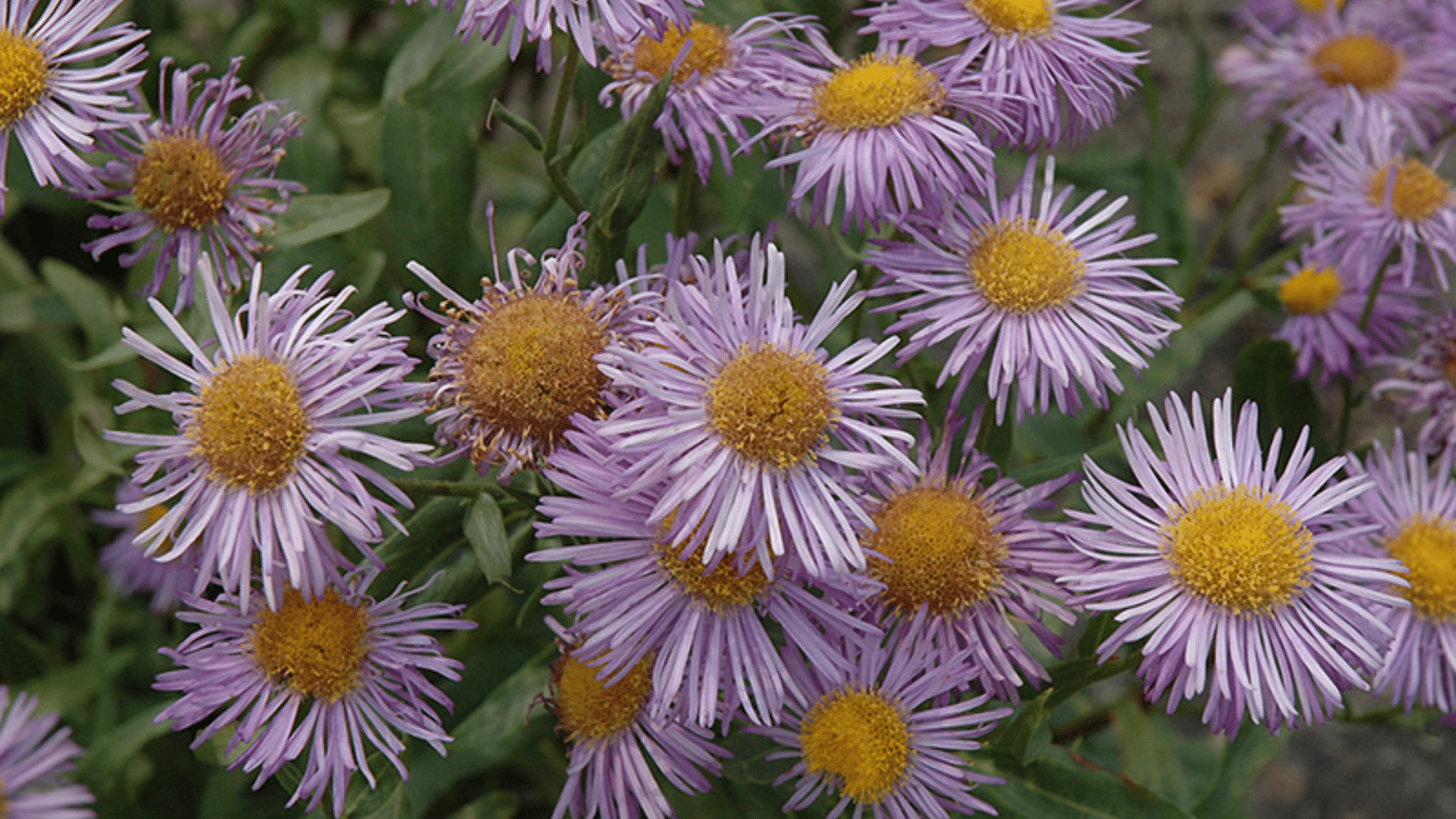
Erigeron, also known as Flea Bane, is a hardy perennial that produces small, daisy-like flowers in shades of white, pink, and purple. It’s a resilient flower commonly found in wildflower meadows and gardens.
| Attribute | Details |
|---|---|
| Scientific Name | Erigeron spp. |
| Commonly Found Region | North America, Europe, and parts of Asia |
| Blooming Period | Spring to Summer |
| Symbolism | Resilience and adaptability |
| Benefits | Low maintenance, attracts pollinators |
How to plant:
- Plant in well-drained soil with full sun or partial shade.
- Water moderately, but avoid soggy soil.
- Space plants around 12 inches apart for proper air circulation.
Fun Fact:Flea Bane flowers are known for attracting a wide variety of pollinators, including bees and butterflies, making them a great addition to pollinator gardens.
Winter Blooms: Flowers That Start with E
Several E-flowers bring life to winter gardens when most plants are dormant. Early Crocus peeks through snow with its purple, white, or yellow blooms, often the first sign that spring is coming.
Euphorbia rigida offers bright colors in cold months, with its rosettes of flowers standing strong against the winter chill. Eranthis, also called Winter Aconite, produces cheerful yellow blooms in late winter, creating sunny spots in otherwise bare garden beds.
The following are a few beautiful flowers that start with e and grow in the summer:
21. Erysimum (Winter Wallflower)
22. Early Crocus
23. Eranthis (Winter Aconite)
24. Euphorbia rigida
25. Eranthis hyemalis (Winter Aconite)
26. Edelweiss (Leontopodium alpinum)
27. Epimedium grandiflorum
28. Eugenia (Syzygium)
29. Erica cinerea (Bell Heather)
30. Eryngium alpinum (Alpine Sea Holly)
31. Elaeagnus pungens
32. Eryngium giganteum (Miss Willmott’s Ghost)
33. Episcia cupreata
34. Echium wildpretii (Tower of Jewels)
35. Euonymus fortunei (Wintercreeper)
36. Epimedium x versicolor
37. Eucalyptus pauciflora (Snow Gum)
38. Echinocactus grusonii (Golden Barrel Cactus)
39. Exochorda macrantha (Snowdrop Tree)
40. Eryngium yuccifolium (Rattlesnake Master)
41. Episcia pulchella (Trailing Violet)
Wrapping It Up
Flowers that start with E offer a wonderful mix of colors, shapes, and growing needs for any garden. From the eye-catching Easter Lily to the hardy Evening Primrose, these plants provide options for both beginner and expert gardeners alike.
Looking at these 41 E-flowers, it’s clear that nature gives us so many ways to make our gardens special. Each bloom brings its beauty and character to outdoor spaces.
Next time you plan your garden, think about adding some of these E-named flowers. They might not be the first ones that come to mind, but they can make a big impact in your flower beds.
With so many choices from this list, your garden can become a more varied and colorful space that stands out from the rest.

